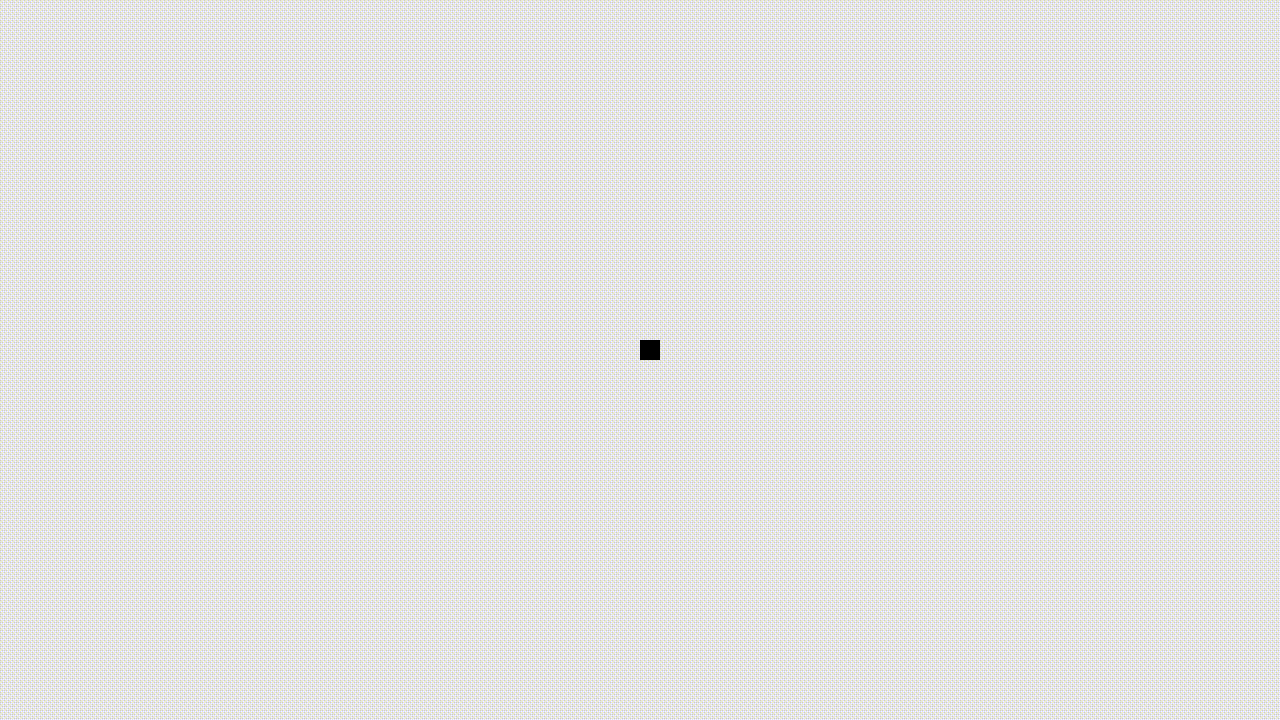I enjoy playing with the DragonRuby Game Toolkit, but the documentation and many of the examples are very much intended for non-Rubyists. Additionally, as a game engine, it's more data/functionally-oriented than most Rubyists are used to. For example, the main game loop in the tick method needs to be implemented as a top-level method.
This post walks through structuring a game in a way that is a little more familiar to Rubyists.
Caveat! I am new to DragonRuby myself and this is not meant to be the "correct" or "best" or even "great" way to organize your code. It's just a pattern I've started using and it might be useful for you!
(By the way, while DragonRuby is a commercial product, you can often grab a free copy. Keep an eye out for sales!)
Starting Example
First, let's start with some code that isn't using any class definitions at all. Everything happens inside tick:
def tick(args)
# Set up player object
args.state.player ||= {
x: args.grid.w / 2,
y: args.grid.h / 2,
w: 20,
h: 20,
}
# Move player based on keyboard input
if args.inputs.keyboard.left
args.state.player.x -= 10
elsif args.inputs.keyboard.right
args.state.player.x += 10
elsif args.inputs.keyboard.down
args.state.player.y -= 10
elsif args.inputs.keyboard.up
args.state.player.y += 10
end
# Render the "player" as a square to the screen
args.outputs.solids << args.state.player
end
As a reminder, DragonRuby automatically loads up code from a file called mygame/app/main.rb and then calls tick 60 times per second.
args.state is like an OpenStruct where you can add on whatever attributes you want and store whatever you would like. In this case, we add a hash that we name player.
The code then checks for keyboard input and adjusts the position of the "player". (To keep things very simple, we don't worry about keeping the player on the screen.)
Finally, we render the "player" as a solid square.
This is simple enough and the code isn't too complicated. But, just for fun, let's slowly transform it to be a little more "object-oriented".
Game Object
First, let's create a main "game" object to hold our logic, instead of putting it all in tick.
class MyGame
# Adds convenience methods for args, gtk, keyboard, etc.
attr_gtk
def initialize(args)
args.state.player = {
x: args.grid.w / 2,
y: args.grid.h / 2,
w: 20,
h: 20,
}
end
def tick
if keyboard.left
state.player.x -= 10
elsif keyboard.right
state.player.x += 10
elsif keyboard.down
state.player.y -= 10
elsif keyboard.up
state.player.y += 10
end
outputs.solids << state.player
end
end
def tick args
$my_game ||= MyGame.new(args)
$my_game.args = args
$my_game.tick
end
Now the tick method only sets up the global $my_game on the first tick, then sets args on each tick and calls the game's tick method.
(Tangent alert! Is it necessary to set args on every tick? Not strictly - you could set self.args = args in initialize and it will work okay. But if you want to use DragonRuby's unit test framework, it may cause problems because each test has a fresh copy of args.)
Using attr_gtk allows the code to be a bit shorter. args, state, keyboard, and more now have convenience methods for them.
Instance Variables Instead of State
args.state is essentially a global variable space. This is a big convenience when a game is all top-level methods - otherwise you would have to figure out where to stash all your game state yourself.
However, it's not required to use it.
The code below uses @player to store the player hash, instead of args.state.
class MyGame
attr_gtk
attr_reader :player
def initialize(args)
@player = {
x: args.grid.w / 2,
y: args.grid.h / 2,
w: 20,
h: 20,
}
end
def tick
if keyboard.left
player.x -= 10
elsif keyboard.right
player.x += 10
elsif keyboard.down
player.y -= 10
elsif keyboard.up
player.y += 10
end
outputs.solids << player
end
end
def tick args
$my_game ||= MyGame.new(args)
$my_game.args = args
$my_game.tick
end
One thing that has thrown me off with DragonRuby is understanding just how much "regular" Ruby I can use. For the most part, other than how the tick method is used as the main game loop, you can use the Ruby language constructs you are comfortable with.
Splitting Things Up
No big change here, but as a game grows it's easier to split the steps of each game loop into different methods.
class MyGame
attr_gtk
attr_reader :player
def initialize(args)
@player = {
x: args.grid.w / 2,
y: args.grid.h / 2,
w: 20,
h: 20,
}
end
def tick
handle_input
render
end
def handle_input
if keyboard.left
player.x -= 10
elsif keyboard.right
player.x += 10
elsif keyboard.down
player.y -= 10
elsif keyboard.up
player.y += 10
end
end
def render
outputs.solids << player
end
end
def tick args
$my_game ||= MyGame.new(args)
$my_game.args = args
$my_game.tick
end
Player Class
Final step in this post - let's move the "player" out to a separate class.
In this example, it might not make a lot of sense. But in most games there will be a lot of state and logic you might want to associate with the "player" or any other objects in the game. Having it be its own class helps keep the logic in one place.
class MyGame
attr_gtk
attr_reader :player
def initialize(args)
@player = Player.new(args.grid.w / 2, args.grid.h / 2)
end
def tick
handle_input
render
end
def handle_input
if keyboard.left
player.x -= 10
elsif keyboard.right
player.x += 10
elsif keyboard.down
player.y -= 10
elsif keyboard.up
player.y += 10
end
end
def render
outputs.solids << player
end
end
class Player
attr_sprite
def initialize(x, y)
@x = x
@y = y
@w = 20
@h = 20
end
end
def tick args
$my_game ||= MyGame.new(args)
$my_game.args = args
$my_game.tick
end
Here the code uses another DragonRuby convenience. attr_sprite adds a bunch of helper methods that allow you to use any object as a sprite/solid/border, etc. (Note that the code still passes player into outputs.solids and DragonRuby treats it as a solid. If it were passed into outputs.sprites then it would be treated like a sprite instead!)
Separate Files?
For the sake of a blog post, all the code is together. But there is no reason not to start splitting the code across separate files.
But! In DragonRuby there is one weirdness with require: you must include the file extension (usually .rb), while in regular Ruby that is usually omitted.
Wrapping Up
Did our code become longer and less straight-forward? Yes, for this small example, definitely.
But as a game (or any project) grows, pulling bits out into modular pieces is going to be an advantage. Personally I fall back on this structure pretty quickly when I start a new DragonRuby project.
Hopefully this post is useful to Rubyists trying to get into DragonRuby!







Top comments (5)
Your series for this game engine are great! <3 .
Looks like the links to the docs are broken now.
Something like
docs.dragonruby.org/#----attr_gtk-rb --> docs.dragonruby.org/static/docs.ht...
Yep looks like I'll need to update now the new (and in my opinion) improved docs have been published.
Edit: links have been updated!
I appreciate these articles. As someone who has experience w/ Ruby, I noticed the same thing you did about the docs being written for non-rubyists. attr_gtk and attr_sprite are great, it seems that these sorts of things are easy to miss if you don't read through all of the examples in the docs.
Thank you! Indeed a lot of otherwise undocumented information is hidden in the example programs.
fantastic, it'd be great if there were more examples like this in the docs and i appreciate the time you took to refactor it!